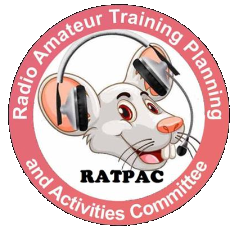Congresswoman Debbie Lesko (AZ-08) introduced The Amateur Radio Communications Improvement Act (H.R. 3241) on May 11, 2023, to require that the Federal Communications Commission (FCC) eliminate the obsolete HF digital symbol rate limit with a 2.8 kHz bandwidth limit.
After being petitioned by ARRL The National Association for Amateur Radio® in 2013 (RM-11708) for the same relief, in 2016 the Commission issued a Notice of Proposed Rulemaking (WT Docket No. 16-239) in which it agreed that the HF symbol rate limit was outmoded, served no purpose, and hampered experimentation. But the Commission questioned whether any bandwidth limit was needed in its place. Most amateurs, including the ARRL, objected to there being no signal bandwidth limit in the crowded HF bands given the possibility that unreasonably wide bandwidth digital protocols could be developed. Since 2016 there has been no further FCC action.
Congresswoman Lesko introduced a similar bill (H.R. 9664) in the 117th Congress in 2022. Read ARRL’s coverage of that bill at this link.
Lesko has long demonstrated an interest in supporting Amateur Radio. Earlier in 2023, she spoke at a Hamfest in Phoenix, Arizona where she met with and praised the work of ARRL Volunteers in the state.
“Increased amounts of data can be put on the spectrum due to advances in modern technology, so there is little need for the FCC to place limits on symbol rates,” said Congresswoman Lesko. “That is why I am proud to reintroduce this important legislation to update the FCC’s rules and increase the speed of transmission so that amateur radio operators can more efficiently and effectively transmit messages during times of crisis, such as natural disasters.”
ARRL President Rick Roderick, K5UR, hailed reintroduction of the bill, stating that “the biggest effects of the FCC’s delay in removing this outdated restriction have been to require totally inefficient spectrum use on the already-crowded amateur HF bands and to remove incentives for American amateurs to innovate with new and better digital protocols. It also has necessitated multiple requests for waivers by the ARRL to facilitate communications during disasters, especially during hurricane season when corresponding amateur stations in the Caribbean, some of which have received assistance from the International Telecommunications Union (ITU) for disaster communications, use faster protocols than currently allowed in the U.S. I hope that the Commission will act to remove this harmful limitation without waiting for the bill to be passed.”
ARRL Legislative Advocacy Committee Chairman John Robert Stratton, N5AUS, added that “the symbol rate limit hampers experimentation and development of more efficient HF data protocols by U.S. amateurs. For all practical purposes the field has been ceded to amateurs outside the U.S., where there is no comparable limit. Removing the restriction not only will allow U.S. amateurs to use the most efficient data protocol suitable for their purpose, but it also will promote and incentivize U.S. amateurs to experiment with and develop even more efficient protocols.”
ARRL extends its deepest appreciation to Congresswoman Debbie Lesko for her continued leadership on behalf of Amateur Radio licensees, and her supportive actions on communications issues that impact her constituents and the nation,” said The American Radio Relay League’s (ARRL) Legislative Committee. “The introduction of the Amateur Radio Communications Improvement Act by Congresswoman Lesko to remove the long-outdated symbol rate limit restricting the speed of amateur digital transmissions will substantially increase the ability of amateur radio to provide more timely and efficient message handling during natural disasters such as hurricanes, tornadoes, floods, and forest fires. Congresswoman Lesko’s foresight in introducing this legislation will serve as a model for the elimination of regulatory barriers to more intensive spectrum sharing.”
A link to the full text of the bill will be provided on the ARRL website as soon as it is available, which is usually several days after introduction. The bill was referred to the House Committee on Energy and Commerce for consideration.
ARRL numbers within its ranks the vast majority of active radio amateurs (or “hams”) in the U.S. and has a proud history of achievement as the standard-bearer in promoting and protecting Amateur Radio. For more information about ARRL and Amateur Radio, visit www.arrl.org.
About ARRL
 ARRL the National Association for Amateur Radio® was founded in 1914 as The American Radio Relay League, as a noncommercial organization of radio amateurs. ARR
ARRL the National Association for Amateur Radio® was founded in 1914 as The American Radio Relay League, as a noncommercial organization of radio amateurs. ARR










 Total views : 3009655
Total views : 3009655 Who's Online : 3
Who's Online : 3